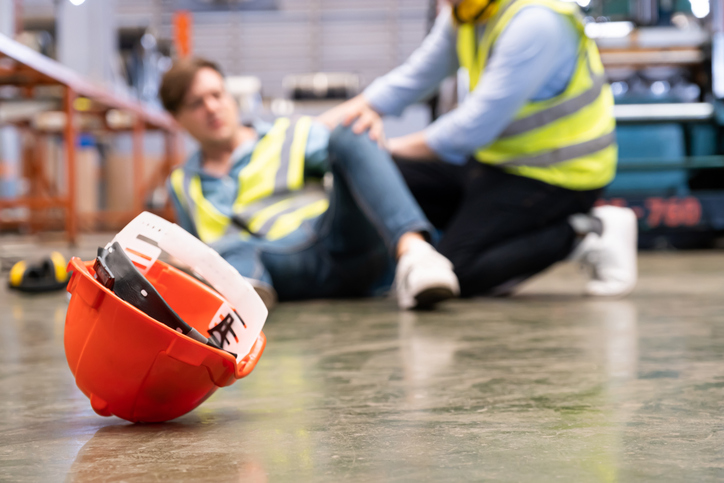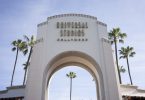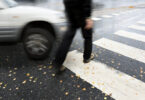Atlanta’s skyline is changing fast. New developments rise almost weekly, from luxury high-rises in Midtown to sprawling mixed-use projects around the BeltLine. But as the city expands upward and outward, something less glamorous grows with it—unsafe walking conditions that are quietly causing an uptick in slip-and-fall accidents across the metro area.
The city’s rapid urban growth has created a collision between construction, weather, and pedestrian traffic—conditions that property owners and developers often fail to manage safely. For residents and visitors alike, these hidden hazards can lead to serious injuries and costly legal battles.
The Growth Problem Beneath Our Feet
Atlanta’s booming infrastructure brings new sidewalks, plazas, and parking decks—but also uneven pavement, temporary walkways, and loose construction debris. According to the U.S. Census Bureau, Atlanta’s population has surged past half a million, and new housing and commercial projects are struggling to keep pace with the influx.
Unfortunately, premises maintenance often takes a back seat to expansion speed. Sidewalks buckle under construction trucks, rainwater pools in unfinished lots, and slick marble lobbies open to the public before safety mats or warning signs are in place.
In legal terms, these are textbook examples of premises liability hazards—conditions that property owners have a duty to correct or warn about. Under Georgia law, property owners must maintain safe conditions for invitees, meaning anyone who enters a property for lawful purposes (like shopping, dining, or attending a meeting). When they don’t, injuries can—and do—follow.
The Role of Weather in Urban Slip-and-Fall Risks
Atlanta’s humid subtropical climate is a major factor that compounds the city’s growth-related hazards. The National Weather Service reports that the metro area averages over 50 inches of rain per year, and many of those rainy days coincide with high foot traffic in outdoor shopping centers, MARTA stations, and downtown sidewalks.
When surfaces like tile, marble, or untreated concrete get wet, their friction coefficient drops dramatically—turning public walkways into trap zones. Research from the Centers for Disease Control and Prevention (CDC) confirms that even minor environmental hazards like water or debris are among the top contributors to slip-and-fall injuries nationwide.
Businesses are required to take reasonable steps to prevent these accidents, such as mopping up spills quickly, posting visible wet-floor signs, and using slip-resistant flooring. Yet in many fast-growing commercial areas, these precautions are inconsistently applied—or ignored altogether.
Common Locations for Slip-and-Fall Accidents in Atlanta
While slip-and-fall incidents can happen anywhere, Atlanta’s urban development has created several hot zones for injuries:
-
Construction Zones: Temporary plywood walkways and gravel-covered paths lack stability.
-
Parking Garages: Oil, water runoff, and poor lighting create ideal conditions for falls.
-
Grocery Stores and Malls: Frequent spills and crowded aisles demand constant maintenance.
-
Restaurants and Hotels: High foot traffic near entryways increases exposure to wet floors.
-
Office Buildings: Newly constructed lobbies often feature sleek, slippery flooring materials.
Each of these spaces presents unique risks, but all share the same legal question: Did the property owner exercise reasonable care to prevent harm?
The Legal Reality: Georgia’s Comparative Fault Rule
Even when a fall seems clear-cut, victims in Georgia face another obstacle—comparative fault. Under Georgia Code § 51-12-33, compensation can be reduced if the injured person is found partially responsible. For instance, if a court determines you were 20% at fault for “not watching where you were walking,” your damages could be reduced by 20%.
If you’re deemed 50% or more at fault, you may receive nothing. That’s why it’s critical to have a knowledgeable advocate who understands both the local landscape and the nuances of Georgia’s negligence laws.
Protecting Pedestrians in a Growing City
Atlanta’s transformation is remarkable, but public safety must grow alongside economic opportunity. Developers, property managers, and business owners share a civic duty to maintain safe, walkable spaces that don’t put residents and visitors at risk.
For those who have suffered from preventable injuries on unsafe property, accountability begins with understanding your rights. Contact our Slip & fall accident attorneys in Atlanta, GA today to discuss your case and protect your future.







